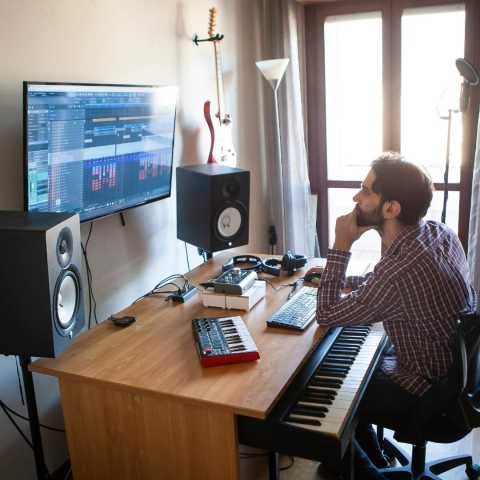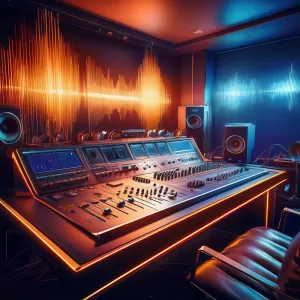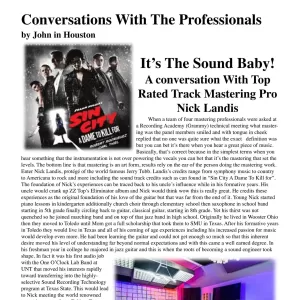
It's finally time. You've labored over your mix for weeks, tweaking every little detail. The vocals are present and upfront, the drums have that perfect punch, and the guitars sound massive.
However, before you hit the send button to your mastering engineer, be sure you didn’t make these few critical mistakes in your mix.
Beginner and experienced engineers can make these mistakes, negatively impacting your final record if gone unchecked.
By avoiding these mistakes, you can ensure that your music will sound its best, and as a bonus, you'll have a happy mastering engineer.
Let’s get started!
Not checking your phase relationships
When two signals are out of phase, it can create a hollow and weak sound or make a sound disappear altogether. The most common place you'll get phase-related issues is with multi-mic'd instruments such as drums.
If you've struggled in your mix to get a kick and snare to "smack," the culprit is likely some phase cancellation with one of the other drum mics. You can fix this by simply flipping the track's polarity to see if you get a rounder, fuller sound.
However, a more sneaky culprit of phase issues in the mixing stage is the overuse of stereo wideners. Yes, we often want our mixes to sound huge. Still, if you abuse widening, your mixes aren't going to translate to other listening environments.
The best way to know if you've overdone it on a stereo widener is to collapse your mix into mono and see if elements disappear. If they do, then you have phase problems with your mix.
In fact, let's just make it a general rule that you should avoid wideners and leave it to the mastering engineer.
Delivering a mix with no headroom
Delivering a mix crushed by a limiter or clipper will make any mastering engineer’s blood boil. Limiters and clippers don’t leave any dynamic range for the mastering engineer to work with and often have distortion and other artifacts introduced when overused.
However, It's no secret that one of life's great joys is listening to music loud, and I don't blame you for putting a limiter on your track so you can hear your track slap.
But before you deliver that mix, turn it off and ensure that you leave plenty of headroom/dynamic range for your mastering engineer. Let them be the ones to get your music to a competitive volume.
A good rule of thumb is to have your stereo bus levels hover around -6db before delivery.
Not checking your mix in multiple environments
Checking your mix on different systems and listening environments is critical for ensuring your tonal balance is correct.
While you might get the mix to sound excellent in your home studio environment, you may notice big differences in the sound as soon as you play it elsewhere. Perhaps the vocal sibilance is piercing, the low end is too boomy, and the midrange is scooped.
It's critical to remember that this overall balance of instruments and EQ is the mixing engineer's job. The mastering engineer is to polish your mix, not fix all of your mistakes.
When you check your track in multiple environments, you will expose the weaknesses in your mix so you can fix it before sending it off to mastering.
Another great practice that piggybacks off this tip is to check your mix against a professional reference. Be sure to level the match so you're not tricked into thinking louder is better, and use it as a general roadmap for your mix's overall EQ and compression.
Using too much mix bus processing
I get it; putting plugs on the mix bus is fun. It feels like you're getting big gains with little effort. However, abusing mix bus processing will handicap your mastering engineer, and your project will suffer.
Now I understand that mixing into bus processing is a standard workflow for many engineers. However, if you don't know why you're putting processing on your mix bus, then don't do it.
It's critical to remember that as a mixing engineer, you're job is to make all of the individual tracks work together. The mastering engineer is to polish the stereo file or, in other terms, do their work on the mix bus.
Try to do your best to give your mastering engineer a track they don’t have to fight against by keeping your mix bus processing at a minimum.
Sending files in the wrong format
This one may seem like a no-brainer, but after the end of a long day of mixing, you may not notice your bounce settings are off.
When you send your file off for mastering, make sure you send it in WAV format or AIFF—not an MP3 format!
MP3 files are compressed, low-resolution files and will be quickly rejected by your mastering engineer.
Also, ensure that your files are in 24-bit format and at least a 44.1k sample rate.
All modern DAWs will allow you to export your files in multiple formats. So just be sure that you double-check your export settings before bouncing the track.
The Bottom Line
By avoiding these mixing mistakes before you send your songs off for mastering, you'll give yourself—and your mastering engineer—a much better chance of having a successful outcome.
If you have any questions about mastering, or if you're looking for a professional mastering engineer, feel free to contact Nick Landis. He’d be happy to chat with you about your project and goals with your music production.
Thanks for reading!


